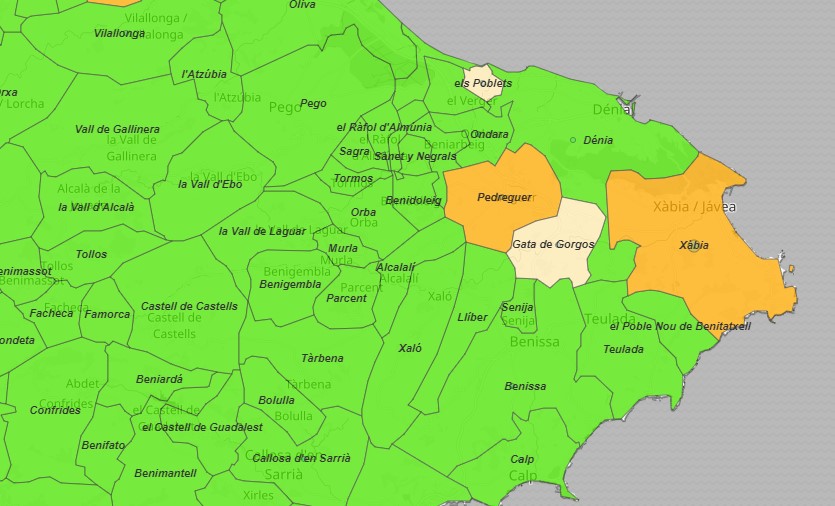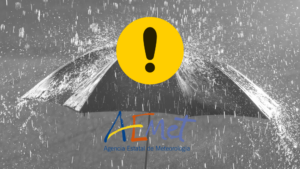VIRUS UPDATE: Number of positive cases rises by just 1 in Xàbia
Xàbia’s data has improved since the last update but the municipality remains in the ‘medium risk’ level.

Tuesday 8th June 2021 – Compiled by MIKE SMITH
The total number of positive coronavirus cases detected by PCR test in Xàbia has risen by 1 to 1,501, according to the latest update from the regional health ministry. And with 26 cases detected in the past 14 days, the municipality’s 14-day IA rate, a measure of the speed at which the virus moves through the population, has dropped to to 92.80 cases per 100,000 inhabitants, which means that the town remains in the ‘Medium Risk’ category. There have been no new deaths in Xàbia since late March and the number for remains at 12.
In the Marina Alta region, there have been 48 new positive cases detected in the past 14 days (of which Xàbia accounts for more than half) whilst the total number of positive cases since the pandemic began has been confirmed as 10,143 since the last update, a rise of 8; Pedreguer 3, Ondara, 2, and one each in Els Poblets, Gata de Gorgos and Xàbia . The region’s 14-day IA rate has dropped to 28.13 cases per 100,000 inhabitants and the region remains in the ‘Low Risk’ category. There have been no new deaths since the last update and the region’s toll remains 203.
Xàbia (92.80) and Pedreguer (50.75) are the only municipalities in the Marina Alta at the ‘Medium Risk’ level whilst two municipalities are in the ‘Low Risk’ category: Els Poblets (36.85) and Gata de Gorgos (32.04). The rest of the municipalities in the region are at the ‘New Normal’ level, with 25 of them showing no infection spread over the last 14 days.
Spain
Spain’s 14-day IA rate is 115.32 cases per 100,000 inhabitants and the country remains in the ‘Medium Risk’ category. The rate has dropped by almost 11% in the past two weeks, whilst the Positivity Rate, the measure of how many coronavirus tests return positive, is 4.70%; a value of 5% or less indicates that transmission of the virus is more or less under control.
Across the autonomous regions, La Rioja is now the only one with a 14-day IA rate above 200 (215.68) where infection spread has risen by 51% over the past fortnight. Four regions remain at ‘High Risk’: La Rioja, Andalucia, País Vasco and Melilla. The Comunidad Valenciana (40.04) remains at the ‘Low Risk’ level and reclaims the crown for the region with the lowest rate of infection spread, although that spread is 40% higher than two weeks ago, no surprise as restrictions continue to be eased.
Infection spread has continued dropped in the majority of Spain’s autonomous regions and enclaves but the rate of decrease has been slowing down.
The newspaper El País has reported that Spain has re-opened to tourists who can prove that they have been vaccinated against COVID-19 with vaccines approved by either the WHO or the EMA, more than 14 days prior to arrival. Travellers arriving from low-risk zones will not have to provide such proof but all arrivals still have to fill out the Spain Travel Health (SpTH) form. However, a ban of arrivals remains in place for those wanting to travel from India, Brazil and South Africa, even for those who have been fully vaccinated.
El País also reported that Spain’s Supreme Court has ruled that general curfews and restrictions on social gatherings cannot be imposed under current health laws.
Vaccination (07.06.21)
Spain has administered 30,007,806 doses of vaccine, which is 90.6% of those which it has already received. A total of 11,002,869 people have completed the recommended course, which is 27.4% of the total of the population which is to be vaccinated (40,129,822).
According to the latest data provided by the health authorities, 88.8% of people aged 50 and over in Spain have received at least one dose, with 49.4% having completed the recommended course.
The Comunidad Valenciana has administered 2,980,160 doses of vaccine, which is 88.2% of the total which it has received. A total of 1,053,837 people have completed the recommended course, which 24.7% of the population which is to be vaccinated (4,289,305).
According to the latest data provided by the health authorities, 86.5% of people aged 50 and over in the Comunidad Valenciana have received at least one dose, with 47.2% having completed the recommended course.
The newspaper El Pais has reported the Spanish health authorities have opted to use the one-dose Janssen vaccine for the 40-49 age group, a decision that could see the speed of the country’s vaccination campaign accelerate significantly. This age group is the largest in Spain, with 7.9 million people.
LINKS
- Actualización nº 391. Enfermedad por el coronavirus (COVID-19). 07.06.2021
- GIV COVID-19 Gestión integral de la vacunación COVID-19
- COVID-19 C. Valenciana: Monitoratge de la situació



